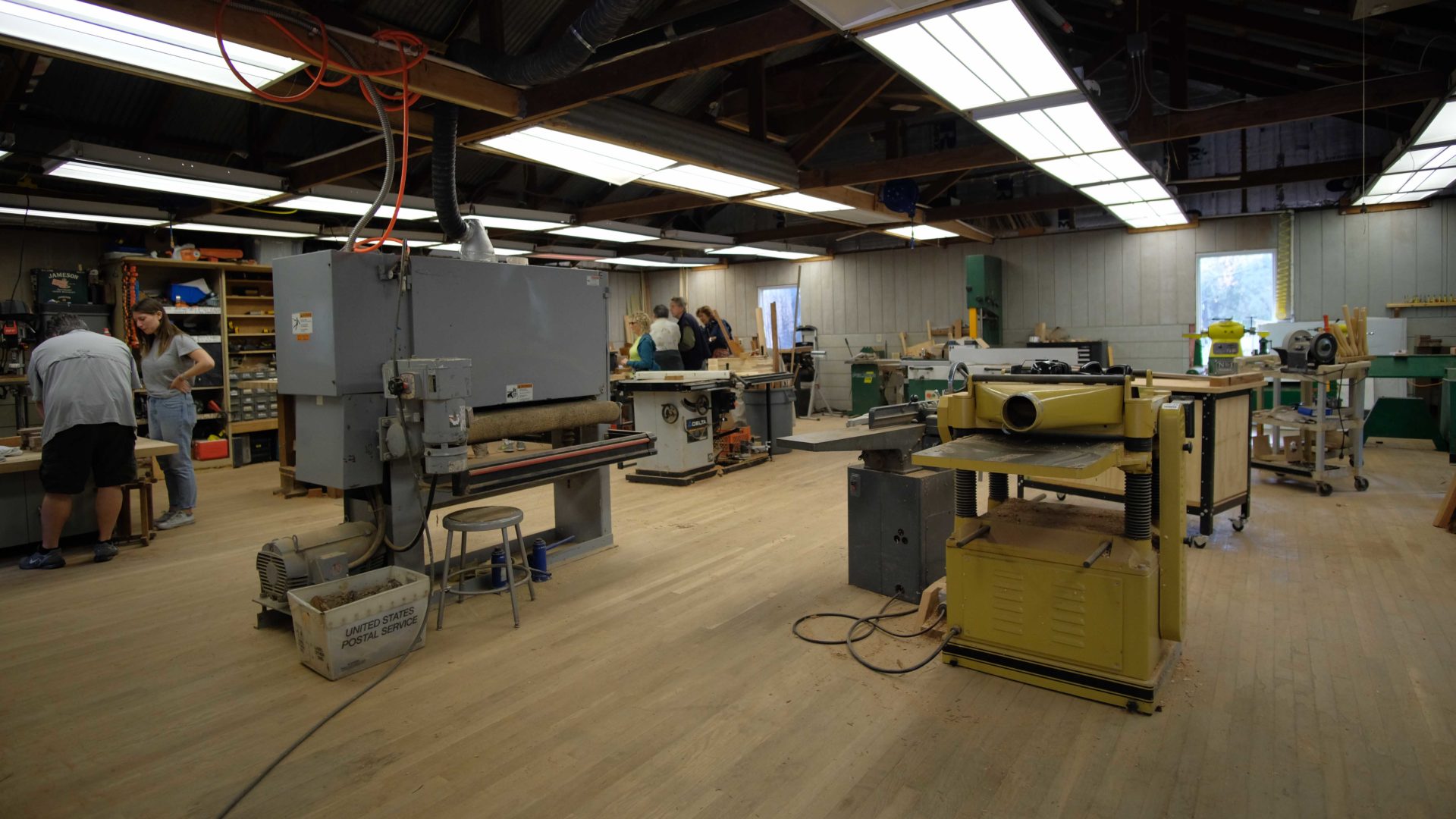Sometimes shop time can be a fun and helpful if we wing it. But sometimes you want to try something more technical, or more complex. Sometimes a lesson is about building a specific skill, and that sort of lesson can be facilitated by piloting. Piloting can mean having the right tools around, it can mean having jigs pre-made, but it can also mean you have tested your shop for general accessibility. Piloting is more than testing, piloting is preparation, and having a tidy shop like in the header image.
This resource is intended to help sighted instructors prepare their workshops for visually impaired students. It is not uncommon that instructors ask about piloting under blindfold. Blindfolding and similar practices are sometimes called “perspective simulations.” Many groups frown on perspective simulations, including blindfolds, because they are misleading and can promote discrimination. Sighted people are not good at being blindfolded, so they grossly underestimate what is possible for someone adept at non-visual problem solving techniques.
On the other hand some blind woodworking instructors will invite or even require sighted students to use a blindfold. However in those cases a visually impaired instructor is in control of the learning and perspective taking. They can control for a certain amount of misleading conclusions. If you do chose to pilot under blindfold, be sure that you situate your experience in an actual blind person’s experience and never just your own. Be certain never to assume any of your limitations are someone else’s.
Blind woodworking instructors note that effective piloting can be especially important for visually impaired students who are novice. Piloting (along with iteration) is the means by which effective confirmations and constraints are devised. For example, a student might pilot a cut by running a scrap piece through the saw, then measure it, and then nudge the saw fence to sneak up on the measurement. Read more about the importance of confirmations and constraints.
In the video below, one instructor lays out the plan, demonstrating how piloting a plan allows for resources to be optimized by means of using multiple tools at once for a plan that comes together.
